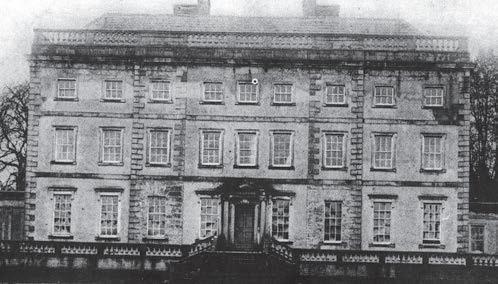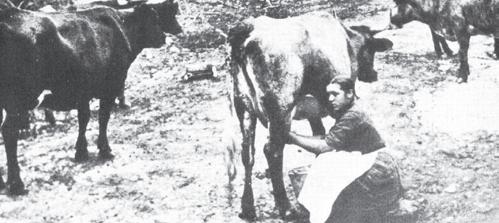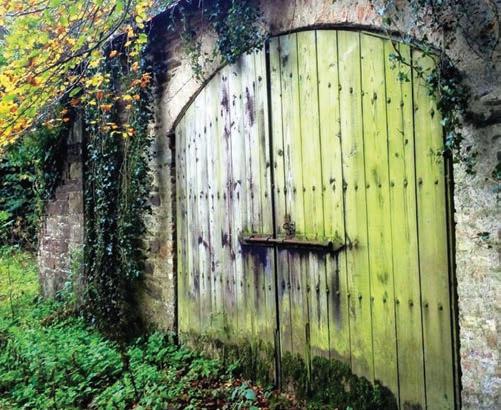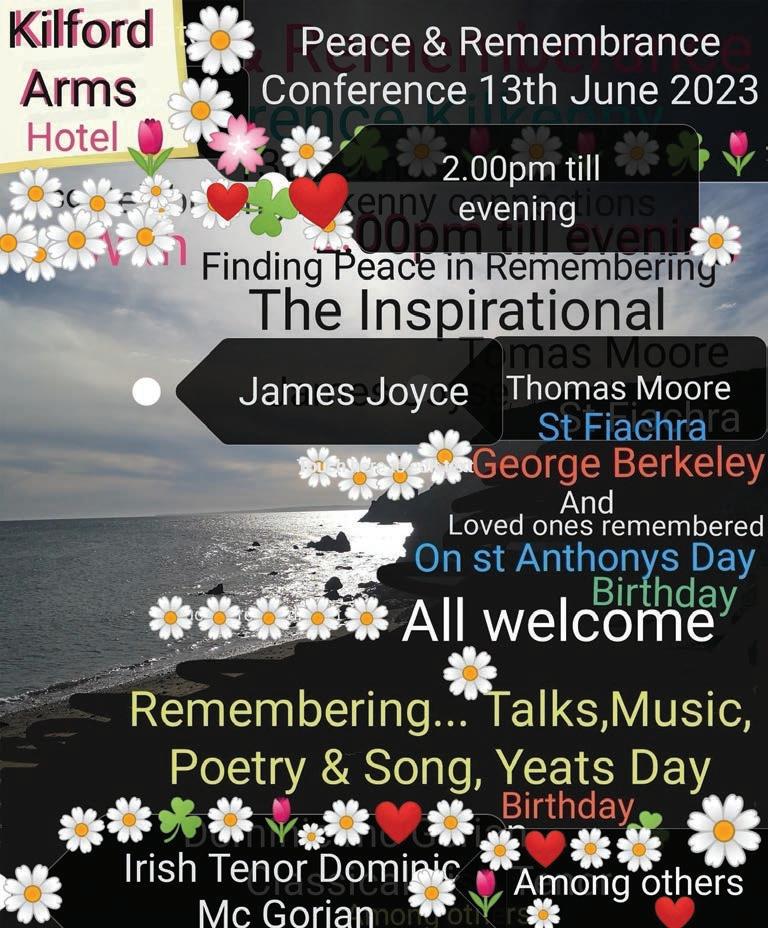
2 minute read
The Magic of Castlemorris
BY JOHN FITZGERALD
Paddy Hearns of Hugginstown could recall a di erent time in Ireland, so far removed from our own fast-track age as to be almost beyond present-day comprehension. In 1989, he told Radio Kilkenny listeners about what he called "growing up in Paradise."
Advertisement
In his young days, Paddy lived in a cottage on the 500acre estate at Castlemorris (or Castle Morres, as it was also called) owned by the powerful Montmorency clan. e Comerfords built the big house, designed by Francis Bindon, in about 1750. e Montmorencys had moved into the area after Oliver Cromwell reallocated con scated lands.

Paddy’s father Jack was a sheepherder who worked on the vast estate. e burly gentleman trekked to the foot of the Comeraghs week after week to buy sheep. Paddy remembered him bringing home fteen shillings a week for his labours.

But the landlord was no tyrant, in Paddy’s recollection. He recalled: "My father was granted the grass of two cows, and a lovely little garden with vegetables in it. at’s what the Master gave us, God bless him, and sure what more would anyone want?" is attitude might be construed as cap tipping and subservient. Yet Paddy never thought much about the social divisions and inequalities that characterized pre-independence Ireland, or indeed the historical context of his "Master’s" incredible wealth and status. Likewise, the de e Hearns family got free fuel for the res that kept them warm in the long winter months. And whenever they needed medical attention, the de Montmorencys sent in their own doctor to look after them.
Montmorencys took their exalted position for granted. ey were born to greatness and mastery.
Paddy remembered Irish being spoken quite a lot by older people in his childhood days at Castlemorris. "I heard the unfamiliar words that were exchanged by the wise folk, many of whom would have been alive during the famine, or had a close connection with that terrible time". e buzz of Gaelic conversation around Hugginstown is now a thing of the past. e singers have fallen silent, and nature is somehow out of tune with us…or should that be the other way around?" e dances at Castlemorris were lively a airs, with people from all over the district stepping it out to the best of Irish music. A friend of Paddy’s who couldn’t a ord the entrance fee to the dance one year got around this hitch by taking a barrel of beer from Smithwicks into the dance hall. Once inside, he could join the revellers. e Black Bog races at Hugginstown also provided fun and divertissement for Paddy and his friends in the dear old days gone by. e event started in 1922 and continued until 1959. Apart from the excitement of the horses running, and the gambling, there were colourful sideshows to keep non-racing fans happy. e monthly fair of Castlemorris was another big social occasion, with sellers and buyers from miles around converging on the district. e Carlins of Cavan always seemed to buy the best cattle. Local men positioned themselves at the cross hoping to be employed by the cattle drovers.

Another sound familiar to him in his youth and childhood was that of the corncrakes, which he stopped hearing in his latter years because modern insecticides and arti cial fertilizers had banished them from the land. e hawks he saw as a child swooping majestically from the sky over Castlemorris also disappeared from the area, thanks to so-called progressive farming methods.
"When I got up early in the morning as a young fella", recalled Paddy, "I was greeted by the sights and sounds of Paradise. All the creatures of the forest were out and about to welcome a new day. And the birds chirped in harmony as the great Dawn Chorus was heard. Nowadays you’d be lucky to hear a single robin.

To be continued…












